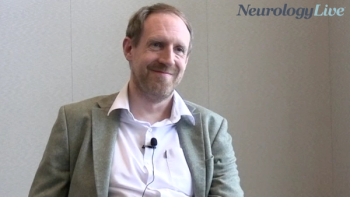
Bright Ambient Light Improves Sleep Disturbances in Older Adults With Dementia
The light intervention was found to reduce awakening time at night, delay sleep offset, and advance sleep onset in a small patient population with dementia.
A recently conducted study found that bright ambient light in the morning assisted in improving sleep disturbances and stabilizing circadian rhythms of older adults with
A total of 60 patients were screened from community and nursing homes for participation in the study. Following elimination of 14 patients who did not meet inclusion criteria, 35 were then allocated to experimental and comparison groups at baseline. An additional 13 patients withdrew, leaving 22 in total, 11 allocated to the experimental group and 11 to the comparison group. Those in the experimental group were exposed to ambient light at 2500 lux, while those in the comparison group were exposed to 114-307 lux, with data collected at baseline and in the fifth and ninth weeks.
Investigators, including corresponding author Yiing Mei Liou, PhD, distinguished professor, Institute of Community Health Care, School of Nursing, National Yang Ming Chiao Tung University in Taipei, Taiwan, found that those in the experimental group showed significant improvement in sleep efficiency with mean increases of 41.9% (P <.001) at the fifth week and 37.1% (P = .002) at the ninth week. Also in the experimental group, sleep time had mean increases of 141 minutes (P = .001) at the fifth week and 135 minutes (P = .008) at the ninth week, as well as awakening time decreases of 116 minutes (P = .001) at the fifth week and 108 minutes (P = .002) at the ninth week. Sleep onset advancements were observed at the fifth and ninth week, at 60 minutes and 84 minutes, respectively, and sleep offset was delayed by 57 minutes and 79 minutes relative to baseline, respectively.
According to investigators, significant treatment effects peaked at the 4-week mark and were lessened after 8 weeks of treatment. Participants’ adherence rate was 84%, with authors concluding that 4-week therapy is recommended, as it is shorter in duration and had high rates of adherence and acceptability.
WATCH NOW: Looking Ahead for Development in Alzheimer Disease: Howard Fillit, MD
“This study found that the severity of dementia level influenced the effect of ambient bright light on sleep efficiency and time, with values of 0.6% and 90 min, respectively (both P < 0.05), in the characteristic slope. This suggests that ambient bright light therapy is more effective for severe dementia than for moderate and mild dementia, which is consistent with previous reports,” Liou et al wrote. “Patients with Alzheimer's-type dementia showed better sleep efficiency than those with other dementia types, which is consistent with previous reports. In our study, participants might have required wheelchairs and engaged in insufficient total physical activity. Therefore, a proper regimen of ambient light is required for older adults with dementia.”
The study was limited by its methodology, as a controlled longitudinal-group single-blind experimental design and random group dependent on patient preference, which may limit generalizability of results. The experimental group also showed a greater attendance rate than the comparison group, and the comparison group had more participants that were men (33%) than the experimental group (5.9%), with a significant between-group difference in gender ratio (P <.05). This then limited investigators’ ability to determine the effects of light exposure on disturbances in sleep and circadian rhythm for older men with dementia. Lastly, the authors noted that they did not control the time of use of sleep medications and exposure to natural bright light.
Liou et al stated that there were no adverse effects of light intervention, but there is a need for additional research to investigate the possibility of achieving a benefit/harm balance of light exposure.
REFERENCE
1. Liu CR, Liou YM, Joi J. Ambient bright lighting in the morning improves sleep disturbances of older adults with dementia. Sleep Med. 2022;89:1-9. doi:10.1016/j.sleep.2021.10.011
Newsletter
Keep your finger on the pulse of neurology—subscribe to NeurologyLive for expert interviews, new data, and breakthrough treatment updates.































